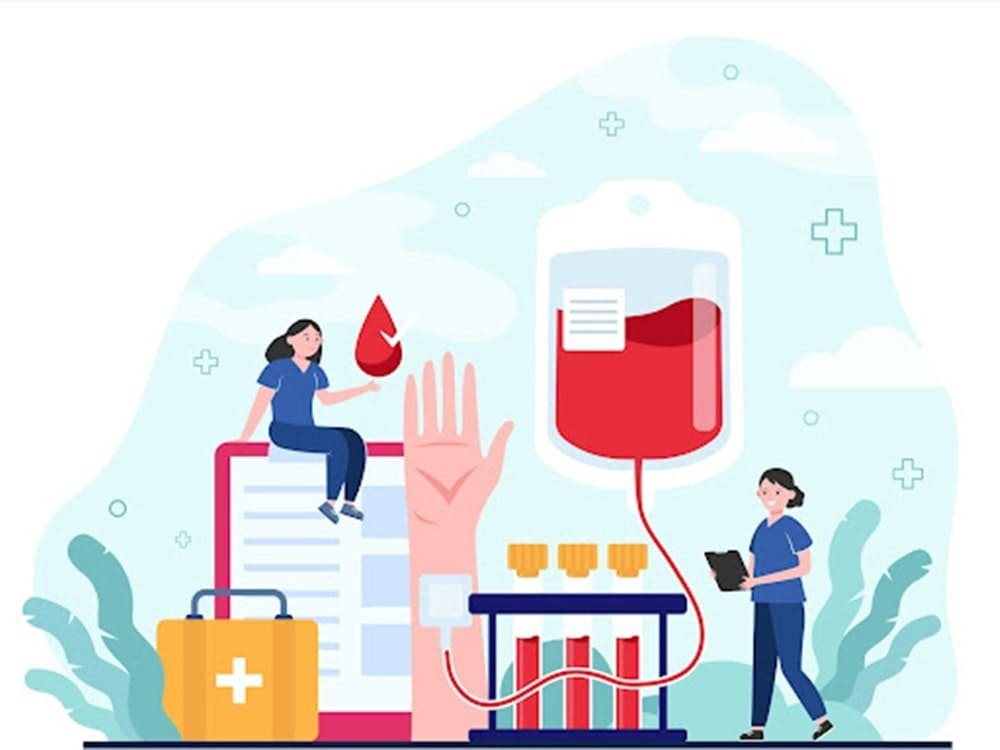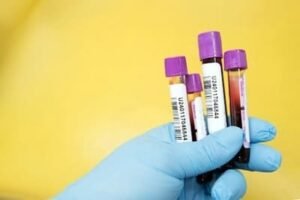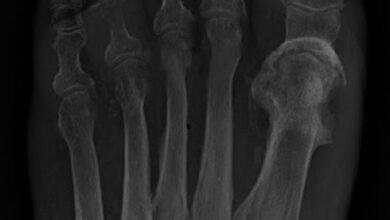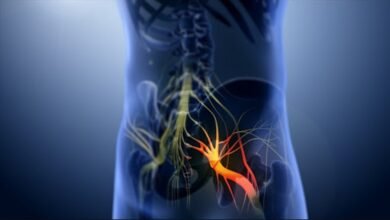
About 400 million people around the world suffer from favism, the disease is widespread in Africa, the Mediterranean countries, and Southeast Asia.
Perhaps the first shock is encountered in childhood when a parent finds out his child suffers from favism.
Let’s learn all about favism, its symptoms, treatment, and the most important prohibitions that a sick child should avoid.
Favism definition
Favism is a genetic defect.
It results in a deficiency of glucose 6-phosphate dehydrogenase (G6PD) enzyme.
G6PD regulates many different biochemical reactions in the body.
It also maintains the health of red blood cells, so the lack of this enzyme leads to the early destruction of red blood cells.
This premature destruction of red blood cells is known as hemolysis and can lead to hemolytic anemia.
Hemolytic anemia occurs when red blood cells get destroyed faster than the body can replace them.
It causes a reduction in the flow of oxygen to the organs and tissues.
It leads to tiredness, fatigue, as well as skin and eyes yellowing, and shortness of breath.
Favism occurs after eating fava beans or some legumes and hence the name.
It can also occur due to infection or taking some medications, such as:
- Antimalarials for preventing and treating malaria.
- Sulfonamides for infection treatment.
- Aspirin for relieving fever, pain, or swelling.
- Some non-steroidal anti-inflammatory drugs (NSAIDs).
How common is favism?
Favism is more prevalent in Africa than in other continents, affecting up to 20% of the population.
Males are more commonly affected than females.
Why does Favism affect males more than females?
Favism is a genetic condition passed from one or both parents to the children.
The defective gene that causes this disease is on the X chromosome.
Males have only one X chromosome, whereas females have two.
So when only one defective copy of the X chromosome is passed to the female, the other is sufficient to perform the required function; Which exposes males to infection more than females.
Risk factors
The risk of developing favism increases by the presence of one or more of the following factors:
- Gender (male).
- African Americans.
- People of Middle Eastern origin.
- Previous family history of infection.
Favism symptoms
It is usually asymptomatic, but symptoms appear when patients are exposed to certain foods, medications, or infections.
Treatment resolves the symptoms within a few weeks.
Symptoms may include:
- Fatigue, pallor.
- Jaundice is a condition in which the skin becomes yellow (yellowing of the skin and whites of the eyes).
- Dizziness.
- Fever.
- Dark or yellow-orange urine.
- rapid heart rate.
- Breathing difficulty.
Favism diagnosis
The possibility of developing favism; increases with a previous family history of the disease.
It is diagnosed by conducting several laboratory analysis, such as:
- G6pd blood test.
- Complete blood count (CBC) test.
- Hemoglobin level test.
- Reticulocyte count analysis.
- Blood bilirubin level. (Bilirubin is produced when red blood cells break down)
What is G6PD blood test?

It is a simple test that requires a blood sample to check levels of G6PD.
How do you prepare for the test?
Tell your doctor about all the medications and prescriptions you are taking; Some medications can interfere with test results.
Also, tell your doctor if you have recently taken fava beans or sulfa medications, which may include:
- Antibacterial or antifungal medicines.
- Diuretics.
- Anticonvulsants.
Sulfa drugs may cause false-negative results in people with G6PD deficiency.
It is preferable to postpone the test if the individual suffers from an episode of favism; Most cells with low enzyme levels break down; Therefore, the results may appear falsely normal.
Fasting is not necessary before the test.
G6PD blood test results
Normal ranges of G6PD include:
- Adults: 5.5-20.5 units/g of hemoglobin.
- Children 1 year of age and older: 8.8-13.4 units/g of hemoglobin.
When the result is only 10% of the normal range; The individual has severely decreased enzyme levels and possibly chronic hemolytic anemia.
If the result is 10% – 60% of the normal range, The individual suffers from hemolytic anemia.
It may be due to certain medications or infections.
Potential risks of the G6PD blood test
Drawing blood samples is a routine procedure that rarely causes side effects, but can include some risks, such as:
- Hematoma bleeding under the skin.
- Excessive bleeding.
- Fainting.
- Infection at the site of the blood drawn.
How to treat Favism?
Treatment is based on removing the cause, such as treating an infection or stopping any medications that can destroy red blood cells.
When it progresses to hemolytic anemia, Oxygen therapy or blood transfusion is required to replenish red blood cells and maintain normal levels.
Moreover, it’s preferable to stay in the hospital while receiving these treatments.
Monitoring of acute hemolytic anemia is crucial to ensure recovery without complications.
Degrees of favism
The World Health Organization has classified favism according to the degree of G6PD deficiency and the severity of hemolytic anemia as follows:
First category
Severe enzyme deficiency leads to chronic hemolytic anemia.
Second category
Severe enzyme deficiency (1-10% of normal level is present) leads to acute hemolytic anemia.
Third category
Moderate deficiency of enzyme levels (10-60% of normal level is present) leads to acute hemolytic anemia.
Fourth category
There is no decrease in enzyme levels (activity 60-150%).
Fifth category
Enzyme activity increased (>150%)
Favism foods to avoid
Unless exposed to a stimulus that causes these symptoms to appear, people with favism do not exhibit any symptoms.
Therefore, foods and medicines that can cause this condition should be avoided.
Some of the favism foods to avoid include:
- Beans and some legumes, such as peas, lentils, and peanuts.
- Sometimes cranberries.
- Soybean products.
- Sulfa drugs
- Antibiotics to treat infections of the skin or urinary tract. As sulfamethoxazole or trimethoprim.
- Quinolone: Antibiotic to treat urinary tract infections and pneumonia. As Ciprofloxacin and Levofloxacin.
- Other antibiotics. As Nitrofurantoin or Dapsone.
- Antimalarials. As primaquine, also in breastfeeding mothers, can cause hemolysis crises for her infant.
- Aspirin.
- Rasburicase an anti hyperuricemic drug. Must be tested on favism patients before using it.
- Mothballs containing naphthalene. Inhaling or ingesting them by mistake stimulates hemolysis.
- Henna, especially in babies under two months, is most at risk.
- Methylene blue.
- Quercetin: An ingredient in some nutritional supplements.
In conclusion, the favism patient can live his life normally with good follow-up and adherence to the instructions.
Hence, a specialist doctor should be consulted when suspicious of any of the above symptoms to obtain appropriate medical care.



